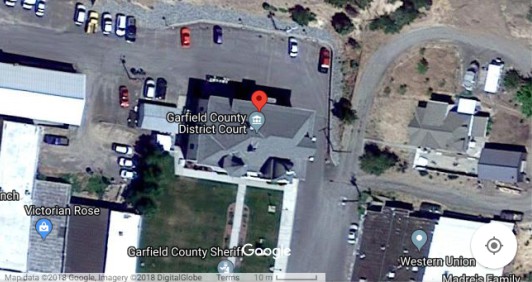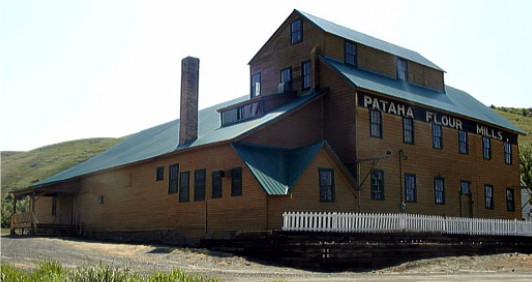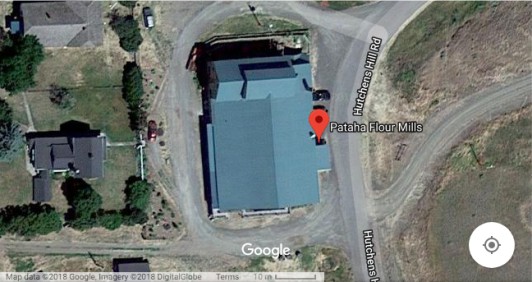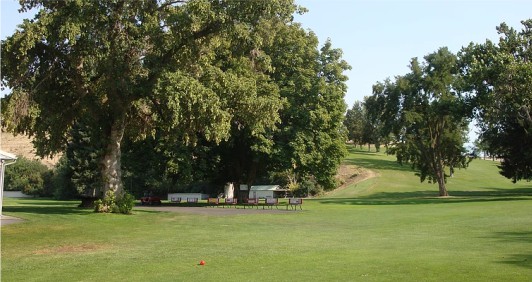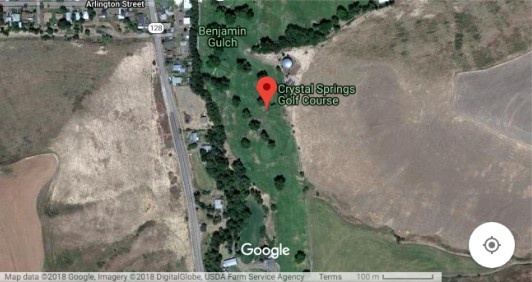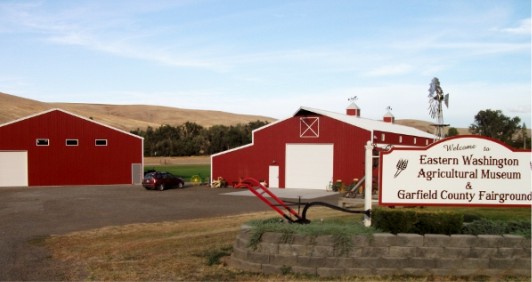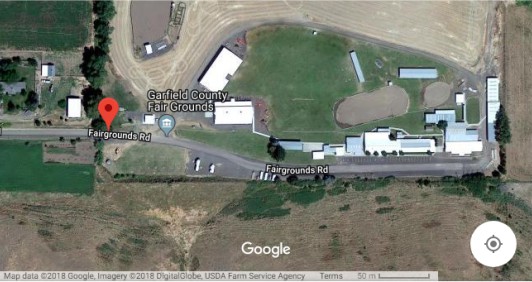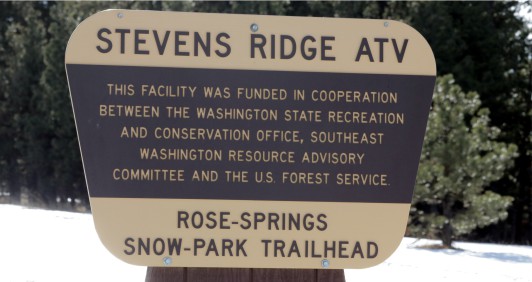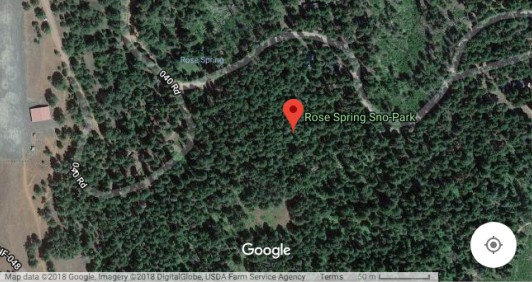

Garfield County & Pomeroy
Garfield County is located in southeastern Washington. It is bordered by Columbia County to the west, Asotin County to the east, and the Snake River to the north, with the Snake River Canyon in places descending well over 1,000 feet to the river. The Oregon state line marks Garfield County's southern border with elevations rising to the Blue Mountains.
Agriculture has dominated Garfield County's economy with farms occupying two-thirds of the county. Wheat is the main crop, though other grains such as barley and bluegrass are also grown. At 712.80 square miles which encompasses a portion of the Umatilla National Forest. Garfield County is the seventh-smallest county in the state. As of 2000, the population is 2397, making it the least populous in the state.
- The county seat is at Pomeroy, the county's only city.
- Agriculture occupies three-fourths of county's land mass.
- Garfield County is the seventh-smallest county in the state, with only 710.5 square miles of area.
- Garfield County is the least populated county in Washington state, ranking 39th among 39 Washington counties, with population of 2,256 people in 2013, or 3.2 per square mile.

Garfield County History
Before white exploration and settlement, the semi-nomadic Nez Perce inhabited the area on both sides of the Nez Perce Trail as means of commerce. The Nez Perce and other native peoples traversed the area near the future town of Pomeroy using what became known as the Nez Perce Trail.
The Lewis & Clark Expedition became the first white men to see Garfield County on October 11th, 1805.
Joseph (b. 1830) and Martha Pomeroy (b. 1842) purchased a ranch on Pataha Creek on the future site of downtown Pomeroy on December 8, 1864, establishing a stage coach station. Pomeroy's station, known to travelers as "Pum's," provided food -- prepared by Martha Pomeroy -- for weary stage travelers during the 1860s and 1870s. Pomeroy also farmed and raised livestock.
In 1881 Garfield County was created from a portion of Columbia County. The county was established by the territorial legislature in 1881 and was named for James Garfield, the U.S. president who died that year. The temporary county seat was located in Pataha City, three miles east of Pomeroy. The permanent county seat was decided in 1882 with Pomeroy being chosen. Garfield County holds the distinction of being the only county in the state that had its county seat established by an Act of Congress.
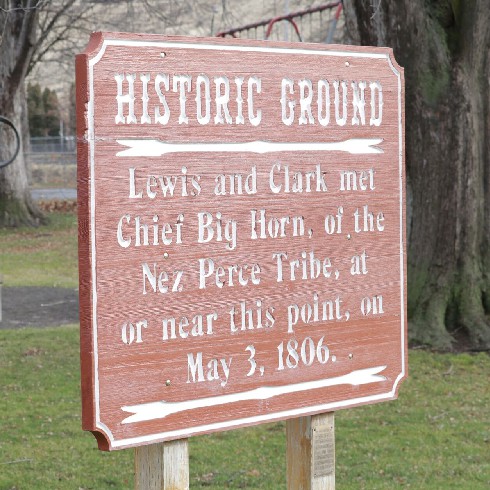

Places of Interest
Garfield County Courthouse
The Garfield County Courthouse, designed by Albany, Oregon, architect Charles Burggraf in the Queen Anne style of architecture, opened in 1901. This building replaced an earlier wooden structure that was destroyed by fire in 1900, and employed stone quarried from Valentine Ridge near the Snake River. The courthouse clock tower is topped by a statue of justice that lacks the traditional blindfold, one of only 20 such sighted justice statues nationwide. The Garfield County Courthouse was added to the National Register of Historic Places in 1974.

Pataha Flour Mill
The Pataha Flour Mills, once famous for its XXX brand flour, was founded in 1878 by John Bauman and George Snyder in Pataha City, the first Garfield County seat. “Pataha” means “Brushy Creek” in the Nez Perce language. John Houser, a German immigrant, who also successfully dabbled in the gold mines, became sole owner of the Mill in 1880 with his wife Marie (John would also take in Harford and Brattain as partners for a short time). It was John's friend, Jacob Bilhmaier, that introduced him to this area. The strong spring and excellent creek just south of the Mill, bearing Bilhmaiers' name, provided the energy needed to run the vast number of machines involved in the milling process.
Pataha Flour Mills, closed in 1943, was eventually sold to Donley Hereford Ranch, who sold it in 1998 to the Jon Van Vogt family. The Mill has been placed under non-profit (501 C-3) status.

Pomeroy City Golf Course
Pomeroy's golf course is city-owned and operated under the city's parks department. It is located on the southeastern edge of town between 15th and 18th streets along tree-lined Arlington Avenue. The clubhouse is open between April and November, but many golfers continue to play year-round. The course itself is a 2,033-yard, par 31 challenge. The absence of traditional water hazards and sand traps is offset with tough driving holes and some hilly terrain.
Tee times are not required, as the course has very few regularly reserved times, and passes are very reasonably priced. Cart and club rentals are also available.
For more information call the clubhouse at 509-843-7491. For current rates and fees, click here.

Eastern Washington Agricultural Museum
A hidden gem, the Eastern Washington Agricultural Museum is located just outside of Pomeroy at the Garfield County Fairgrounds. The museum includes two buildings equaling 17,040 square feet filled with a wide range farm history. The displays consist of machinery and equipment, horse-drawn implements, tractors, engines and other machinery dating from the late 1800’s into the 1950’s. The museum also holds a large collection of household items that that was helped to make an old homestead function. There are branding irons, tools, and even a barbed wire collection. Throughout the year the museum hosts numerous demonstrations of machinery and draft horses, mixed in with various presentations showing historical farming practices. Eight residents saw a vision and garnered local supporters, held fund-raising events and received grants to build the museum. They wanted to preserve the sacred agricultural traditions, educate youth about Washington’s rich farming heritage and to embrace the traditions of small town life. The education one receives when touring the Ag Museum is like taking a step back in time.

Pomeroy City Park
The City Park was purchased in 1901 from the Governor Cosgrove estate for the fair price of $600.00. It included large clumps of black willow trees which were native to the area. The remainder of the ground was largely covered by a jungle of undergrowth, which was later cleared and the trees now standing were planted. While the trees were growing on the park site, the ground was rented for a time to A.H. Mendenhall who grew fine crops of potatoes and saw to the trees.
About 1904 or 1905 the trees were large enough to provide considerable shade and the public began to use the park. The city officials had the ground leveled and seeded to bluegrass.
Many parts of the park have changed since then. Tennis courts were added about 1935 with the City of Pomeroy providing the materials and a group of young men providing the labor. The park now contains swings, a slide, rings and a merry-go-round for children, as well as a gazebo and covered picnic area for everyone to enjoy.

Umatilla National Forest
Pomeroy Ranger District is located within the Blue Mountains of southeastern Washington and northeastern Oregon. The District encompasses 365,901 acres at the northern edge of the Blue Mountains. The mountains offer beautiful views of the canyons and areas surrounding them. There are about 32 miles of trails available for ATV use, and the area is popular for snowmobiling. The Pomeroy District also has four cabins available for rent. The Wenatchee Guard Station is located 30 miles southeast of Pomeroy. The Clearwater Lookout cabin is 20 miles southeast of Pomeroy. The Clearwater Big House cabin is 23 miles southeast of Pomeroy, and the Godman Guard Station is located 45 miles south of Pomeroy. The cabins are available year round. However, in the winter, a snowmobile or cross-country skis are needed for transportation.

